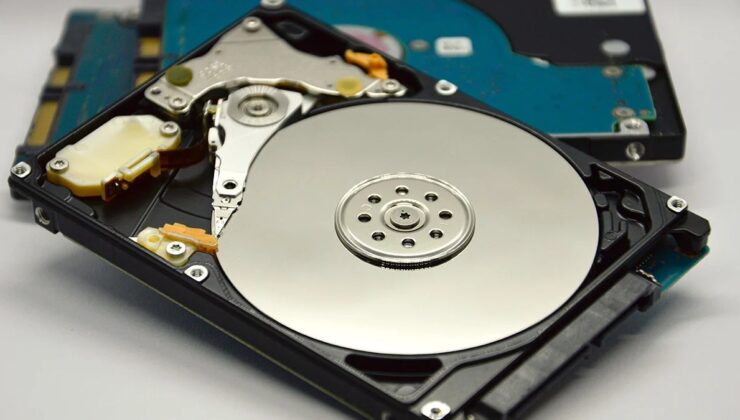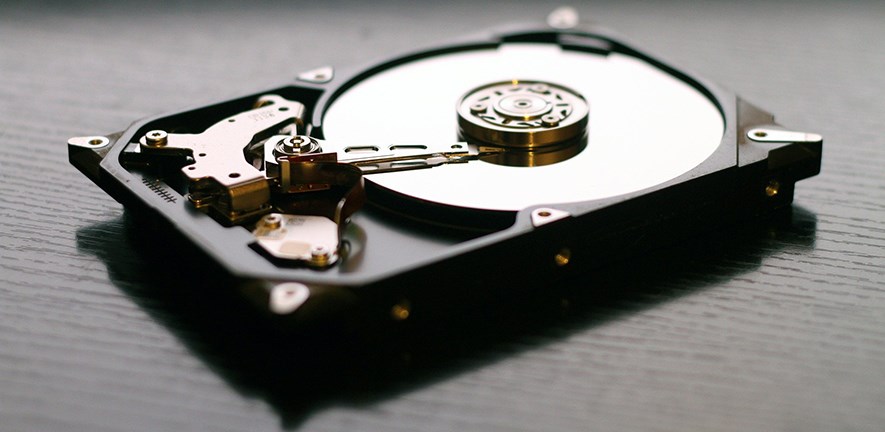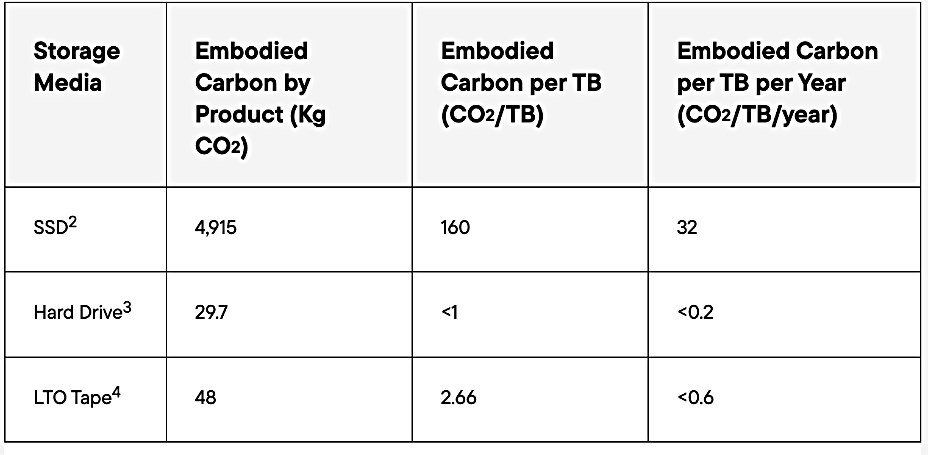



While Solid-State Drives (SSDs) are increasingly taking the place of traditional hard drives in personal computers and consumer electronics, hard drives remain indispensable in environments with substantial data storage needs, such as data centers. As the development of artificial intelligence accelerates, the demand for data centers is expanding, leading to increased energy consumption and carbon emissions.

According to Seagate, hard drives outperform SSDs in terms of carbon emissions. In a comparative analysis of three popular storage solutions—hard disks, SSDs, and LTO magnetic tapes—hard drives emerged as the most efficient concerning carbon emissions.

The study evaluated these storage types across three dimensions: embedded carbon per product, embedded carbon per TB, and embedded carbon per TB per year. Notably, SSDs were found to generate the highest carbon emissions, with figures reaching 4,915 kg CO² annually, 160 CO² per TB, and 32 CO² per TB. LTO tapes ranked second, producing 48 kg CO² per year, 2.66 kg CO² per TB, and under 0.6 kg CO² per TB.
Hard drives demonstrated the most favorable results, emitting 29.7 kg CO² per year, less than 1 kg CO² per TB, and under 0.2 kg CO² per TB.
Data centers are evolving into one of the most energy-demanding sectors within the digital economy, with projections suggesting a power demand increase of up to 165% by 2030. Seagate’s research emphasizes three pivotal strategies for reducing carbon emissions: advancing liquid/immersion cooling and HVAC systems, committing to product longevity and circularity (through refurbishing and reusing products where feasible), and addressing emissions through shared responsibility among companies within the entire data center ecosystem.
Seagate’s analysis implies that hard drives have a sustainable future and remain crucial, contrary to some beliefs that their relevance is dwindling. Seagate is leading the charge by continually developing advanced hard drives to meet the needs of contemporary data centers. The company has recently introduced its new Mozaic 3+ hard drives, featuring HAMR (Heat Assisted Magnetic Recording) technology and offering a 36TB capacity.
SİGORTA
13 saat önceSİGORTA
1 gün önceENGLİSH
10 gün önceSİGORTA
10 gün önceSİGORTA
11 gün önceSİGORTA
14 gün önceSİGORTA
15 gün önce 1
Elon Musk’s Father: “Admiring Putin is Only Natural”
11687 kez okundu
1
Elon Musk’s Father: “Admiring Putin is Only Natural”
11687 kez okundu
 2
7 Essential Foods for Optimal Brain Health
11570 kez okundu
2
7 Essential Foods for Optimal Brain Health
11570 kez okundu
 3
xAI’s Grok Chatbot Introduces Memory Feature to Rival ChatGPT and Google Gemini
11162 kez okundu
3
xAI’s Grok Chatbot Introduces Memory Feature to Rival ChatGPT and Google Gemini
11162 kez okundu
 4
Minnesota’s Proposed Lifeline Auto Insurance Program
9617 kez okundu
4
Minnesota’s Proposed Lifeline Auto Insurance Program
9617 kez okundu
 5
The Division 2: Battle for Brooklyn Expansion
8254 kez okundu
5
The Division 2: Battle for Brooklyn Expansion
8254 kez okundu
Veri politikasındaki amaçlarla sınırlı ve mevzuata uygun şekilde çerez konumlandırmaktayız. Detaylar için veri politikamızı inceleyebilirsiniz.